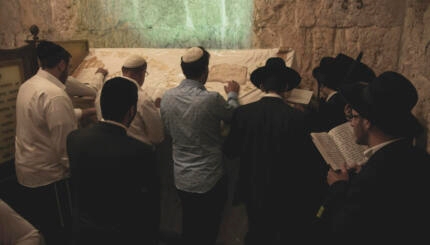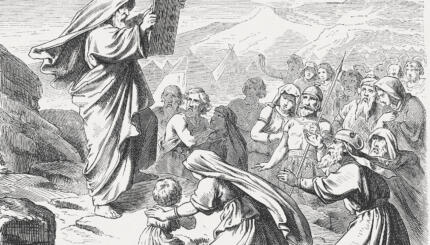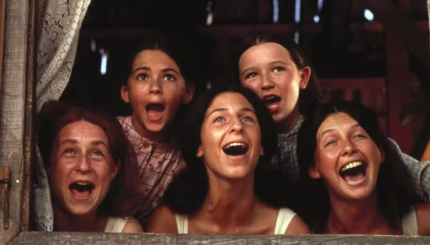A discussion of Jewish attitudes toward women in the Middle Ages is limited by the sources about women’s lives that survive. There are almost no extant books written by women or specifically for them.
Instead, women’s lives are reflected primarily in legal writings, including codes of Jewish law, responsa literature (rabbinic questions-and-answers), contracts related to betrothal, marriage, divorce, and inheritance, and business correspondences. The nature of these sources itself suggests that women were not viewed as participants in Jewish legal discourse, nor did the rabbis feel the need to provide women with literature that would allow them to make study a part of their religious life. At the same time, the rabbis felt that women were within the jurisdiction of Jewish law and felt themselves obligated to protect what they perceived as women’s rights and interests.
The Right to a Restricted Social Life
These two impulses may be seen in the writings of the Maimonides (1135-1205), one of the greatest legal scholars and philosophers of the Middle Ages, who lived in Egypt. Chapter 13 of Hilkhot Ishut, Laws concerning Marriage, in his major legal code, the Mishneh , deals with a woman’s entitlements within a marriage. The 11th paragraph speaks about a woman’s right to leave the house, a privilege that was restricted–at least by custom–in many Muslim lands.
According to Maimonides, a Jewish woman has the right to leave the home, and he lists the places he considers appropriate for her to go: to celebrations, houses of mourning, her parents’ and relatives’ houses, and to do charitable works. Maimonides emphasizes that every woman has the right to come and go freely, because a wife should not be treated like a prisoner.
With your help, My Jewish Learning can provide endless opportunities for learning, connection and discovery.
At the same time, he feels that men should discourage their wives from leaving the house too frequently, because it is a disreputable practice for women to go out constantly, an attitude reflective of the practice in the larger, non-Jewish society in which Maimonides lived. This ruling suggests that Maimonides viewed women as persons in the eyes of the law, with certain inalienable rights, but also with a restricted role in society. Furthermore, women are to receive moral guidance about their behavior from their husbands, rather than through the study of the law.
A Woman’s Happiness Was Valued
There is a great deal of information available about the Jewish community in Egypt from the 10th century on, which survived in the Cairo Geniza, a storeroom for papers that the members of the community used to dispose of religious texts and other documents written in Hebrew characters. There are many marriage and betrothal contracts, which show that families spent a great deal of money in outfitting their daughters for marriage.
Beyond the financial provisions for their daughters, they also attempted to provide for their emotional well-being, by writing in clauses to the betrothal contract to aid the wife in dissolving the marriage if she was unhappy. These contracts show that women were not treated solely as property or a medium of exchange and that their personal happiness was an important consideration.
Jewish Women in Europe
Much less is known about the everyday life of Jewish women in Europe, because the most studied material about the Jews of medieval Europe originates from the rabbinic class, rather than from a large cross-section of society. These writings contrast strikingly with the Cairo Geniza documents on the subject of a woman’s freedom to exit a marriage.
The establishes that a woman who claims that she despises her husband is entitled to have the Jewish courts compel her husband to divorce her. While the Geniza contracts make financial provisions for the dissolution of a marriage at the wife’s instigation, the tendency of the European rabbis was to restrict the wife’s ability to demand a divorce.
The Spanish authority Rabbenu Asher (1250-1337) explained his rationale for these restrictions. A wife might claim to despise her husband simply because she desired some other man, and this was not a sufficient reason to compel a husband to divorce his wife. In this view of marriage, while the wife remained entitled to financial and other privileges, her feelings about her husband were not considered as important as his happiness with the marriage. This ruling may also reflect characterization of women as inconstant in their affections.
The French rabbis also restricted women’s permission to perform commandments that are obligatory for men, but not for women. In particular, they argued that women should not wear phylacteries, because they were not as able as men to maintain physical purity. This ruling seems specifically connected to a concern about purity, rather than a desire to discourage women from performing the commandments, because the French rabbis ruled that women could recite blessings when performing commandments that are only obligatory upon men.
Women and Mysticism
In many religious traditions, mysticism provided an arena in which women had the same access to the divine as men, but this does not appear to have been the case in medieval Europe, the center of the two medieval Jewish mystical movements, the ei Ashkenaz and the Kabbalah. There are no famous female Jewish mystics associated with either movement.
The Hasidei Ashkenaz were extremely careful about fulfilling the commandments and also practiced acts of extreme piety, such as voluntary fasts, as well as magic rituals, to allow them to achieve a special perception of the divine. One of their major works, Sefer Hasidim (written by Rabbi Judah the Hasid in 12th century France), speaks of the importance of marrying a woman who is hasidah, the feminine form of the term for an initiate, hasid. However, women do not seem to have been involved in the magical practices or divine contemplation, and this hasidah may simply be a woman who is scrupulous in her ordinary religious observances.
The better known of the movements, the Kabbalah, included a great deal of speculation about the nature of God. One of the earliest kabbalistic works, the Sefer ha-Bahir–which first appeared in France in the 12th century–is the first to have emphasized that the Shekhinah, a word used to describe God’s presence, is feminine, and to speak about a female aspect of the divine being. The Torah, in the abstract, also is viewed as a feminine offshoot of the divine, sent into exile in the physical world.
However, the inclusion of the feminine in the divine realm did not extend to an inclusion of human women among those who interact with the divine. The –which appeared in 13th century Spain, but claims to be the teaching of Simeon bar Yohai, a rabbi of 2nd century Israel)–is the kabbalistic work with the greatest impact on Jewish mysticism. In its commentary on the Torah portion of Shelah in the book of Numbers, the Zohar describes the arrangement of the afterlife.
Whereas men ascend to God regularly on Sabbaths and festivals, the women are arranged in six halls. Each hall is presided over by a woman who is religiously important, either because she gave birth to or aided a religiously significant man. These women praise God and study the Torah which they could not study while alive, and like the men, they wear garments of light, but ones that are less bright. In two of the halls, the women see the images of the men they helped, and bow to them. At night, the men and women are joined for sex that is infinitely more pleasurable than in the physical world. While women are included in this afterlife, and even allowed to study Torah, their relationship with God is always mediated by and inferior to that of the men, and their sexual and procreative functions are emphasized.
Women were certainly viewed as part of the Jewish community during the Middle Ages, but were frequently peripheralized, especially in religious matters. To some degree they were seen as equally entitled to the protection of the law, but they were viewed as naturally suited to a different social role than men, and at times as inferiors.



